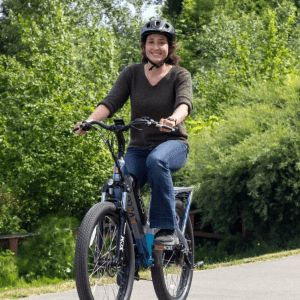Louise Casey’s recent report on grooming gangs and child sexual exploitation in England and Wales lays bare institutional failings. It highlights that, at present, victims cannot rely upon the criminal justice system – and that it has badly let them down in the past.
One of Lady Casey’s 12 recommendations is a new national inquiry into child sexual exploitation. This inquiry would review reported cases that did not result in prosecution, and review police and children’s services to identify children at risk. Prime Minister Keir Starmer has accepted this recommendation, and a statutory inquiry will go ahead into child sexual exploitation and grooming gangs.
As an activist and researcher with over 20 years’ experience focused on violence against women and children, if this new inquiry is to go ahead, I believe its remit must be clear and it must be delivered promptly: within the next two to three years. Importantly, it must avoid duplicating the previous independent inquiry into child sexual abuse, led by Alexis Jay and published in October 2022. It is a sign of institutional failure that those recommendations have still not been implemented.
Professor Jay’s inquiry revealed the failure of many schools, local authorities and other institutions to protect and safeguard the children in their care. Survivors and experts criticised a widespread lack of effort on the part of the police, local safeguarding authorities and the government to better protect children from sexual abuse.
The inquiry made 20 recommendations for action, including mandatory reporting of abuse by people who work with children, and better, more unified data on victims and perpetrators. However, there has been little evidence of such action taking place in the intervening years. None of those recommendations have been fully implemented.
One of the problems facing this new inquiry is how to address the current crisis of confidence and doubt over whether the government will heed these calls for change. In January 2025, Jay questioned whether a national inquiry was the most effective way to address the inherent problems associated with investigating and prosecuting the perpetrators, as well as supporting the victims, of child sexual exploitation.
The findings of her 2022 review revealed ample evidence that schools, police officers, council chiefs and social services acted improperly. It found that they failed to protect victims and those at risk of becoming victims, either by victim blaming or turning a blind eye.
But since Jay’s report was released, survivors of child sexual exploitation remain inadequately supported. This has compounded distrust of, and dissatisfaction with, the police and local systems of government.
Ultimately, the consequence of these multiple government failures is that victims of child sexual exploitation are reluctant to reach out to law enforcement. They fear they will be disbelieved or even blamed for what happened to them. Casey’s recent review states that victims have to live with “an overall system that compounds and exacerbates the damage, [and] rarely acknowledges its failures to victims”.
Heeding calls for change
Identifying the failures of the police and local authorities is key to this process. Victims I have spoken to over the years have described being “fobbed off” – told that something was being done when in fact their cases were not progressing at all.
Some action is underway. Since January 2025, the police have reopened for review more than 800 historic cases of group-based child sexual abuse.
In response to Casey’s review, the Home Office has announced that the National Crime Agency has been tasked with working with police forces to deliver “long-awaited justice” for victims whose cases have not yet progressed through the criminal justice system. It is also intended to improve how local police forces investigate such crimes.
But in my opinion, other factors must also be considered as part of these processes. Above all, adequate training for all professionals involved in identifying, investigating and prosecuting these cases is critical to preventing children from becoming prey.
Healthcare providers, for example, must be equipped with the skills to make sure concern about a child leads to action. They often come into contact with exploited children and so need to know how to identify victims and the signs of exploitation. Hospital staff should be aware of the controlling behaviour that may be displayed by predatory groomers.
This will also provide an opportunity to develop multi-agency screening tools that enable health professionals to help all victims. Some may require care due to pregnancy or injuries arising from the abuse.
Casey’s report is a diplomatically framed, national snapshot audit. All who are concerned about child sexual exploitation can find points with which they agree.
Nevertheless, even if positive legislative changes are implemented, disjointed, dysfunctional practices will continue if education is not put in place. The police, social workers, educators, health workers and community workers should receive effective, consistent training about the issues faced by children who are at risk of exploitation.
Until the government holistically addresses child sexual exploitation, its efforts to shift the dial will remain no more than a sticking plaster. The new inquiry should thus ensure the issues underlying these crimes are fully investigated and addressed. The legal system must bring perpetrators to justice and support all victims on the path to seeking justice and accountability.




